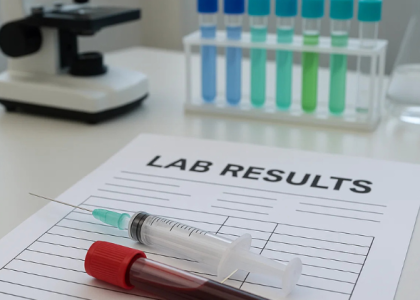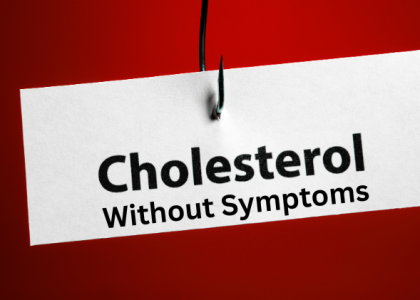Question: My doctor always checks my LDL cholesterol. Now I hear about something called ApoB. What’s the difference?
Both LDL and ApoB are tests that check for heart risk in your blood, but they measure different things. Let’s explain this in simple terms.
The Difference Made Simple
LDL cholesterol is a number that shows how much “bad” cholesterol is in your blood.
ApoB shows how many “bad” particles are in your blood that can cause heart problems.
The Truck Example
Think of it this way:
- LDL measures the total amount of cargo (cholesterol) being transported in your blood
- ApoB counts the number of trucks carrying that cargo
What’s more important for heart risk? It’s the number of trucks (ApoB), not just how much total cargo they carry (LDL).
Here’s why: Each “bad” particle in your blood (like LDL) has exactly one ApoB protein on it. So ApoB directly counts how many potentially harmful particles are traveling in your blood [1].
Why This Matters For Your Heart
When many small trucks (particles) carry a little cholesterol each, they can squeeze into the walls of your heart’s blood vessels more easily than a few big trucks carrying lots of cholesterol.
Traditional LDL tests might miss this problem. You could have “normal” LDL but still have too many small trucks (high ApoB) causing damage [2].
An Example From Real Life
Imagine two people:
Person 1: Has 5 large trucks, each carrying 100 kg of cargo
- Total cargo: 500 kg
- Total trucks: 5
Person 2: Has 50 small trucks, each carrying 10 kg of cargo
- Total cargo: 500 kg
- Total trucks: 50
The traditional LDL test would show the same result for both people (500 kg of cargo). But Person 2 has ten times more trucks (particles) that can damage blood vessels!
Why South Asians Should Know About ApoB
South Asians often have a pattern of small, dense LDL particles with high ApoB levels even when their regular LDL cholesterol looks normal [3]. This may be one reason why heart disease is more common in our community.
When Should You Ask For an ApoB Test?
Consider asking for an ApoB test if:
- You have family members who had heart problems at young ages
- Your LDL is borderline high or even normal, but you still worry about heart risk
- You have diabetes or pre-diabetes
- You’ve been told you have “metabolic syndrome”
- You want the most accurate measure of your heart risk
What’s a Good Number?
For ApoB, lower is better:
- Below 90 mg/dL is generally good
- Below 65-80 mg/dL is ideal if you already have heart problems [4]
Simple Tips
- Next time you see your doctor, simply ask: “Can we check my ApoB along with my regular cholesterol test?”
- If your doctor is unfamiliar with ApoB, you might say: “I’ve read that ApoB gives a more complete picture of heart risk, especially for South Asians.”
- Remember to follow your doctor’s advice about lifestyle changes and medications, regardless of which test you get.
The Bottom Line
LDL tells you how much cholesterol is in your blood. ApoB tells you how many particles are carrying that cholesterol. For heart health, knowing both gives you a more complete picture, but the number of particles (ApoB) is often more important than just the amount of cholesterol (LDL).
References
- [1] UT Southwestern Medical Center. (2024). “ApoB test may be more accurate measure of heart disease risk.”
- [2] Washington Post. (2024). “Why the ApoB cholesterol test is a better predictor than standard tests.”
- [3] Journal of the American Heart Association. (2022). “Physiological Bases for the Superiority of Apolipoprotein B Over Low-Density Lipoprotein Cholesterol.”
- [4] Cleveland Clinic. (2023). “Apolipoprotein B (ApoB) Test.”




